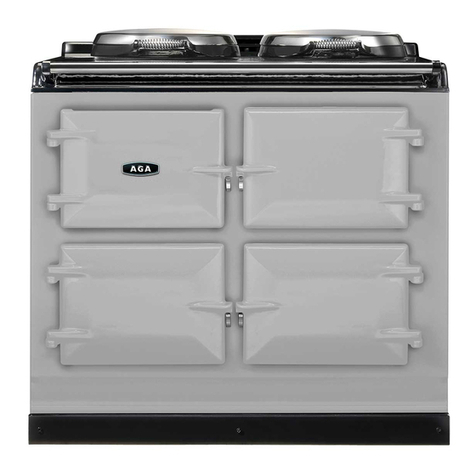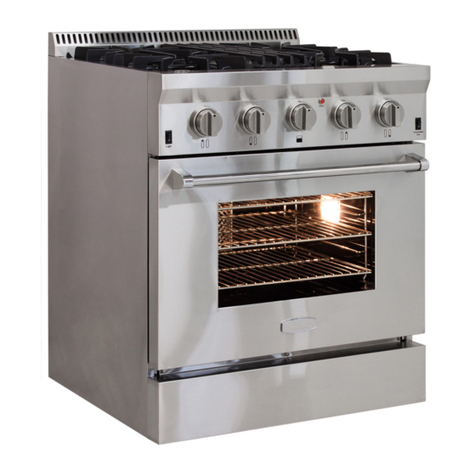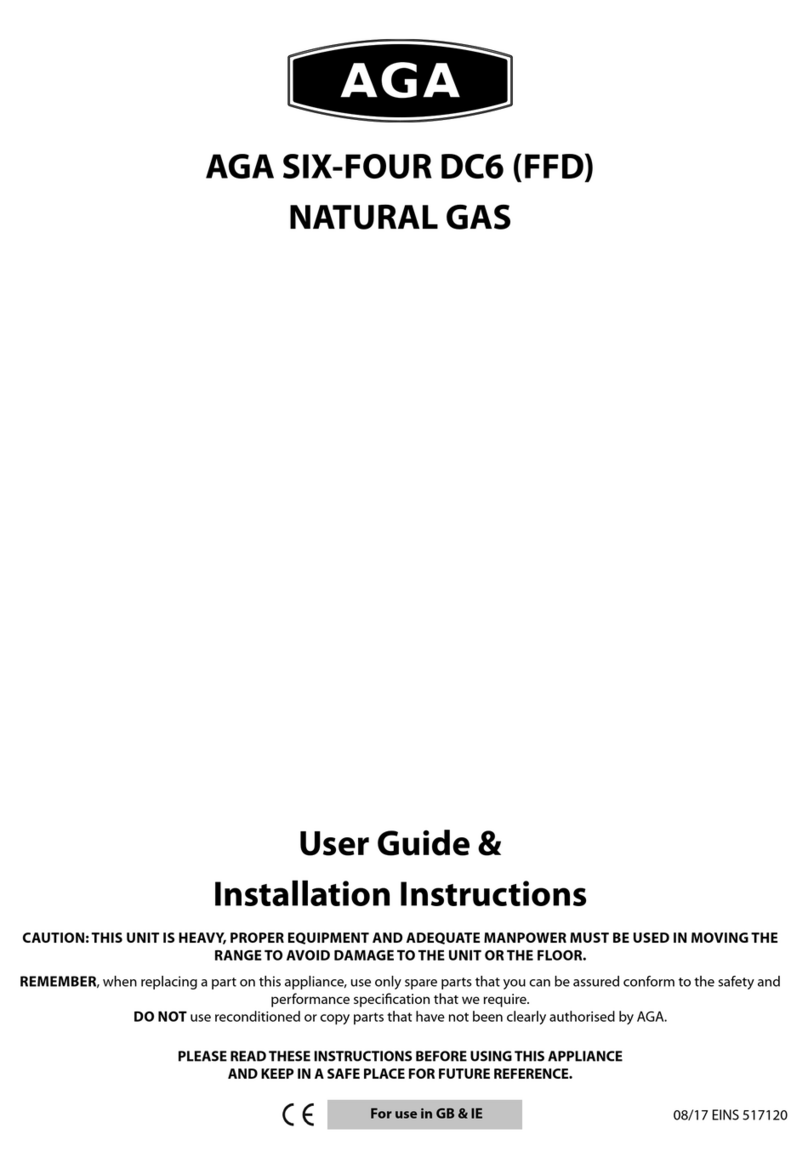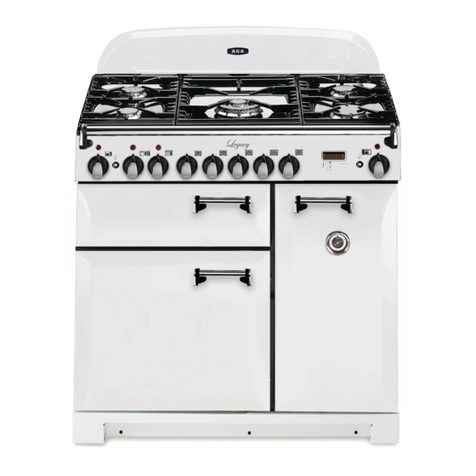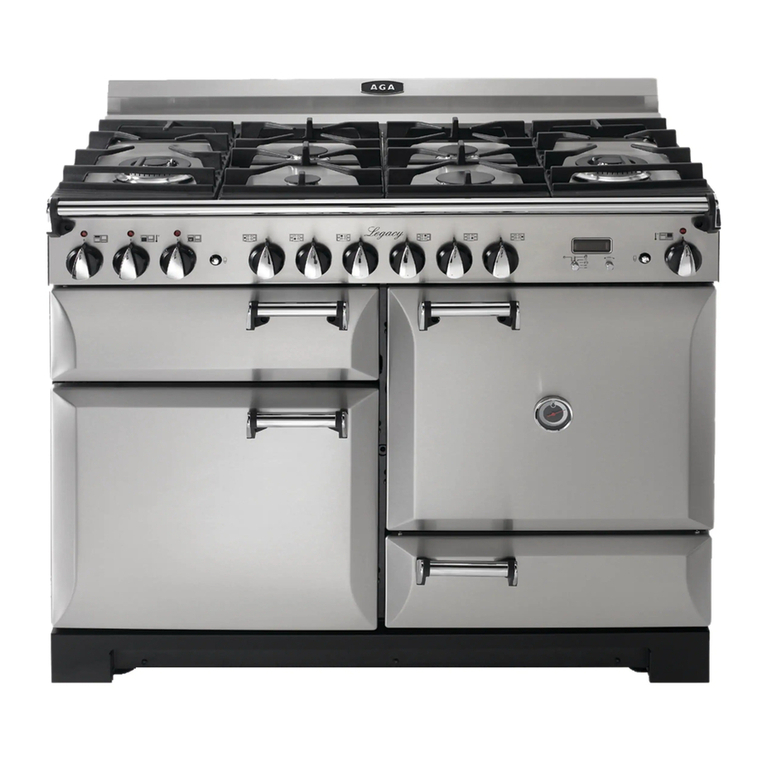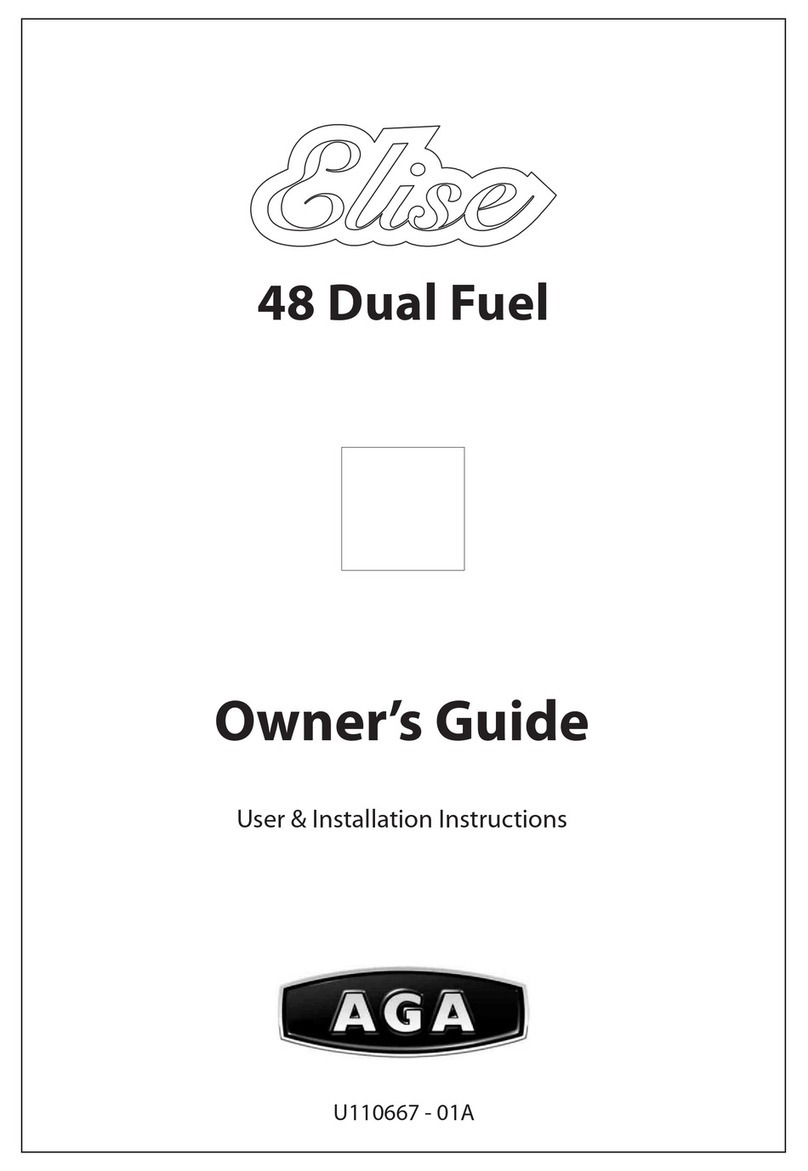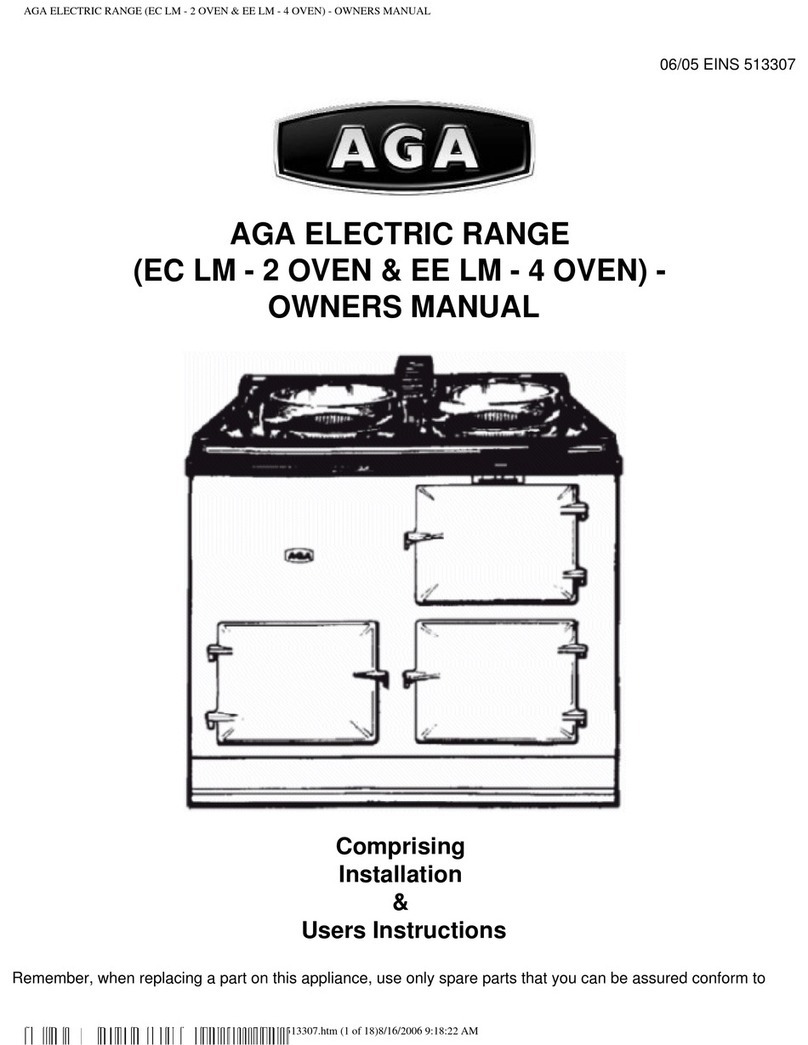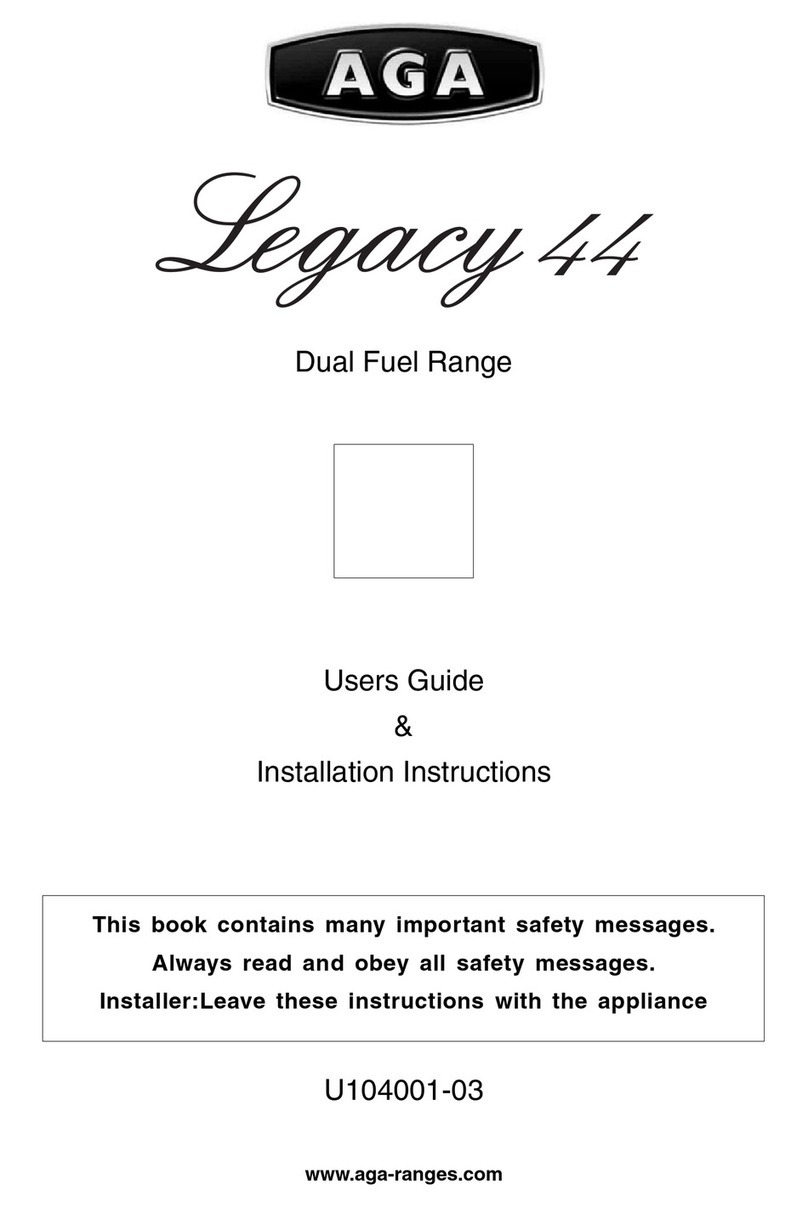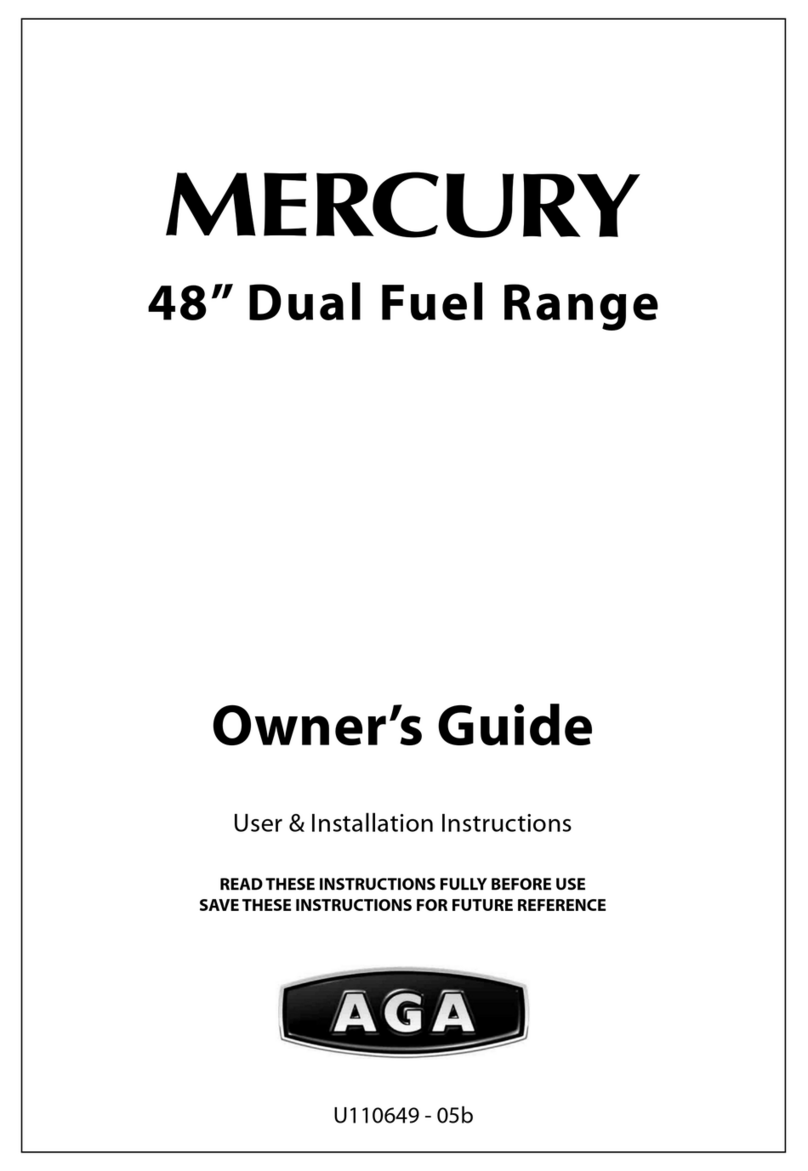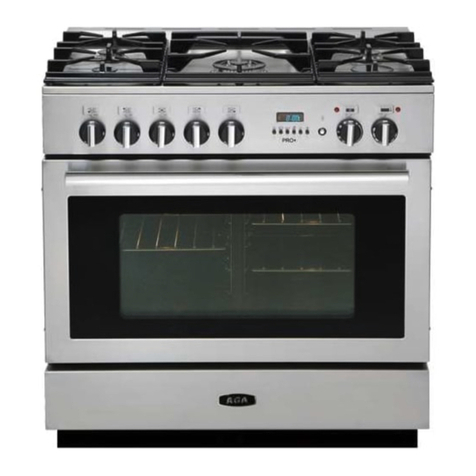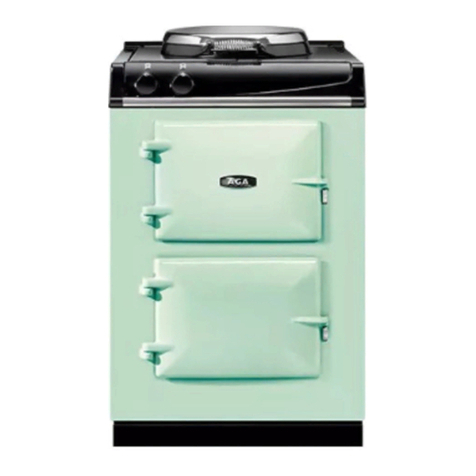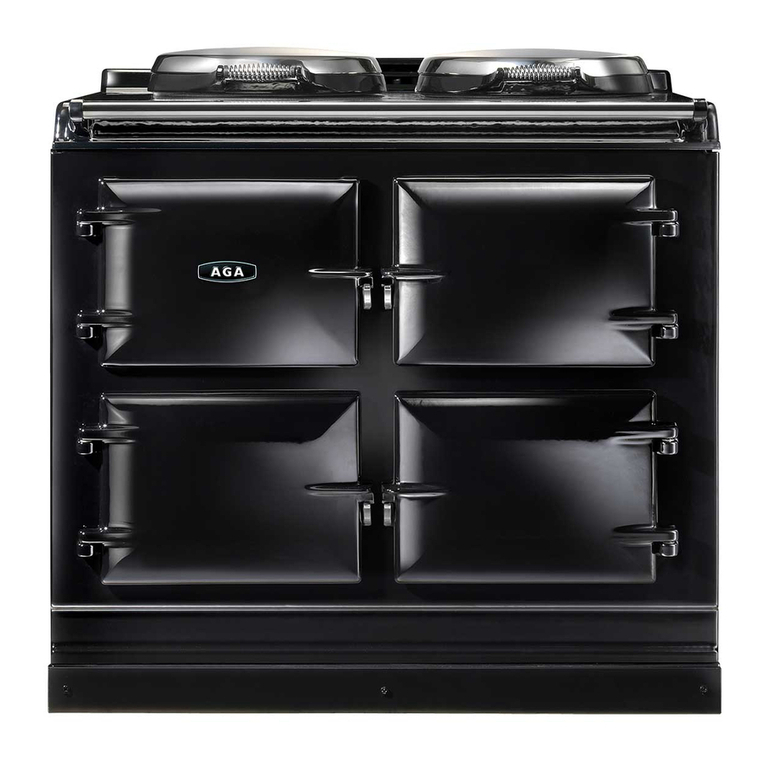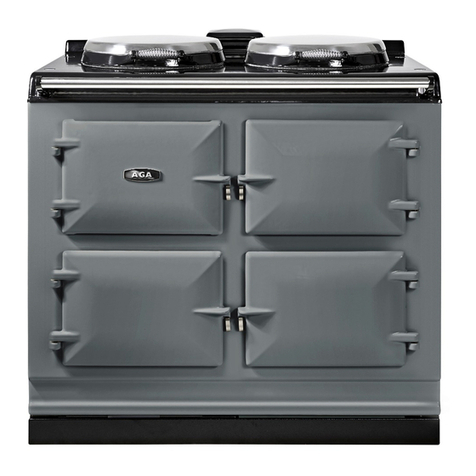6
Read all instructions before using this appliance.
Important Safety Information
Save these instructions for future reference.
To avoid risk of electrical shock, personal
injury, or death, make sure your range has
been properly grounded and always
disconnect it from main power supply before
servicing.
Do not touch cook top burners or areas near
burners
Gas burners may be hot even if they have
been off for some time. Areas near the gas
burners may become hot enough to cause
burns. During and after use, do not touch, or
let clothing touch or other flammable
materials contact the burners or areas near
the burners until they have had enough time
to cool. These areas include the rangetop
and backguard.
DO NOT TOUCH HEATING ELEMENTS OR
INTERIOR SURFACES OF OVENS
Oven and Broiler heating elements may be
hot though they are dark in color. Interior
surfaces of an oven or broiler may become
hot enough to cause burns. During and after
use, do not touch, or let clothing or other
flammable materials touch heating elements
or interior surfaces of oven until they have
had enough time to cool.
Other range surfaces that may become hot
enough to cause burns are the oven door
and oven vent at the base of the range
splashback.
Wear Suitable Clothing
Never wear loose-fitting or hanging clothes
while using the range. Be careful when
reaching for items stored in cabinets over
the cooktop. Flammable material could be
ignited if brought in contact with a burner
flame or hot surface and may cause severe
burns.
Use Only Dry Potholders or Oven Gloves
Moist or damp potholders on hot surfaces
may result in burns from steam. Never let a
potholder touch hot heating elements.
Do not use a towel or other bulky cloth in
place of a glove. They might catch fire if
they touch a hot surface.
Use dry oven gloves when applicable -
using damp gloves might result in steam
burns when you touch a hot surface. Never
operate the range with wet hands.
Important Safety Notice and Warning
The California Safe Drinking Water and Toxic
Enforcement Act of 1986 (Proposition 65)
requires the Governor of California to publish a
list of substances known to the State of
California to cause cancer or reproductive harm,
and requires businesses to warn customers of
potential exposures to such substances.
This appliance contains or produces a chemical
or chemicals which can cause death or serious
illness and which are known to the state of
California to cause cancer, birth defects or other
reproductive harm.
Users of this appliance are hereby warned that
the burning of gas can result in low-level
exposure to some of the listed substances,
including benzene, formaldehyde and soot, due
primarily to the incomplete combustion of
natural gas or liquid petroleum (LP) fuels.
Properly adjusted burners will minimize
incomplete combustion. Exposure to these
substances can also be minimized by properly
venting the burners to the outdoors.
To reduce the risk from substances in the fuel or
from fuel combustion make sure this appliance
is installed, operated, and maintained according
to the instructions in this booklet.

